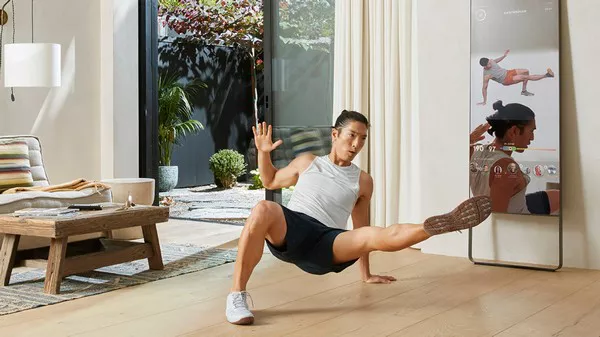Strength training is a vital component of a well-rounded fitness routine, contributing to improved muscle tone, increased metabolism, and enhanced overall physical performance. While many individuals associate strength training with gym equipment, such as dumbbells, barbells, and resistance machines, it is entirely possible to achieve significant strength gains without relying on such equipment. Whether you prefer to exercise in the comfort of your home, while traveling, or in the great outdoors, bodyweight exercises and other creative techniques can provide an effective alternative to traditional gym-based strength training. In this comprehensive guide, we will explore how to perform strength training without equipment, including variations, progression techniques, and the benefits of this versatile approach.
SEE ALSO: Best at Home Strength Training: An Easy-to-Follow Guide
1. Bodyweight Exercises for Strength Training
Push-Ups: One of the most fundamental bodyweight exercises, push-ups engage multiple muscle groups, including the chest, triceps, shoulders, and core. To perform a proper push-up, assume a plank position with hands slightly wider than shoulder-width apart, lower your chest towards the ground while maintaining a straight line from head to heels, and then push back up.
Squats: Squats are excellent for strengthening the lower body, targeting the quadriceps, hamstrings, glutes, and calves. Stand with feet shoulder-width apart, lower your hips back and down as if sitting in a chair, and then return to a standing position.
Lunges: Lunges help build stability and strength in the legs. Step one foot forward and lower your body until both knees are bent at a 90-degree angle, then push back up and switch legs.
Planks: Planks are exceptional for core strength. Start in a push-up position but rest on your forearms, keeping your body in a straight line from head to heels and engaging your core muscles.
Bicycle Crunches: For a challenging core exercise, lie on your back, bring your knees toward your chest, and perform a bicycle pedaling motion while touching your elbow to the opposite knee.
Pull-Ups/Chin-Ups: If you have access to a sturdy horizontal bar, pull-ups and chin-ups are fantastic for targeting the back, biceps, and shoulders. Use an overhand grip for pull-ups and an underhand grip for chin-ups.
Dips: Use parallel bars or the edge of a sturdy surface to perform dips, which target the triceps, chest, and shoulders. Lower your body down until your elbows are at a 90-degree angle and then push back up.
2. Circuit Training for Strength Training
Circuit training is a time-efficient and effective way to incorporate bodyweight exercises into your strength training routine. By performing a series of exercises back-to-back with minimal rest between each one, you can elevate your heart rate and improve both muscular endurance and cardiovascular fitness. Design a circuit with a variety of bodyweight exercises, such as push-ups, squats, lunges, and planks, and perform each exercise for a set amount of time (e.g., 30 seconds) before moving on to the next. After completing the entire circuit, rest for 1-2 minutes before repeating the sequence.
3. Progressive Overload for Strength Training
Just like traditional strength training, progressive overload is essential for continued progress and improvements in bodyweight exercises. To continually challenge your muscles, you can make modifications to your body positioning, increase the number of repetitions, or add more challenging variations to the exercises. For example, to progress your push-ups, you can perform decline push-ups with your feet elevated on a stable surface or try one-arm push-ups for an added challenge.
4. Isometric Exercises for Strength Training
Isometric exercises involve contracting muscles without joint movement. These exercises are an excellent addition to bodyweight training as they can help strengthen muscles at specific angles and improve joint stability. Planks and wall sits are classic examples of isometric exercises that can be easily integrated into your routine.
5. Plyometric Training for Strength Training
Plyometric exercises, also known as “jump training,” focus on explosive movements that increase power and athleticism. Moves like jump squats, burpees, and clap push-ups can be incorporated into your bodyweight strength training routine to add variety and challenge your muscles in different ways.
6. Flexibility and Mobility Work for Strength Training
To complement your strength training routine, it is crucial to work on flexibility and mobility. Incorporate stretching exercises like yoga or dynamic stretches into your warm-up and cool-down routines to enhance your range of motion and reduce the risk of injury.
Creative Use of Everyday Objects Without Equipment
Incorporating everyday objects into equipment-free strength workouts can add variety and challenge to your routine. By using common household items, you can target different muscle groups and increase the difficulty of exercises. Here are some creative ways to use everyday objects for strength training:
1. Water Bottles or Milk Jugs: Fill up empty water bottles or milk jugs with water, sand, or other materials to create makeshift dumbbells. Use them for exercises like bicep curls, overhead presses, lateral raises, and tricep extensions.
2. Backpack: Load a backpack with books, canned goods, or any heavy items to turn it into a weighted vest or a makeshift weighted backpack. Wear it during bodyweight exercises like squats, lunges, push-ups, and mountain climbers to increase resistance.
3. Towels: Use towels as sliders to add challenge and instability to exercises. Place them under your feet during exercises like mountain climbers, hamstring curls, or plank knee tucks to engage your core and improve balance.
4. Chairs or Steps: Chairs or stable steps can be used for various exercises. Perform tricep dips using the edge of a chair, step-ups or Bulgarian split squats using a sturdy step, or incline push-ups with your hands on a chair seat.
5. Brooms or Mops: Hold a broom or mop handle with both hands and perform exercises like overhead squats, Russian twists, or woodchoppers to work on core strength and rotational movements.
6. Laundry Detergent Bottles: Large laundry detergent bottles can serve as kettlebells substitutes. Perform swings, deadlifts, or goblet squats with these bottles to target multiple muscle groups.
7. Books or Textbooks: Stack books or textbooks and use them as elevated platforms for exercises like single-leg squats or decline push-ups.
8. Rice Bags or Sandbags: Fill a sturdy bag with rice or sand to create a sandbag, which can be used for exercises like lunges, squats, and shoulder carries to challenge stability and add resistance.
9. Stairs: If you have access to stairs, use them for cardiovascular exercises like stair sprints or step-ups. Stairs can also be used for incline or decline push-ups.
10. Canned Goods or Food Cans: Use canned goods or food cans as makeshift hand weights for exercises like lateral raises, front raises, or bicep curls.
11. Tall Wall or Tree: Find a sturdy wall or tree and perform wall sits, where you sit against the wall with your knees at a 90-degree angle, to target the lower body.
12. Jump Rope: A jump rope can provide an excellent cardiovascular workout while also engaging the calves, quads, and core.
13. Basketball or Soccer Ball: Use a basketball or soccer ball to add instability to exercises like push-ups or planks. Place your hands on the ball while performing these exercises to challenge your stability and engage your core.
The Benefits of Strength Training Without Equipment
Convenience: One of the most significant advantages of bodyweight strength training is its convenience. You can perform these exercises virtually anywhere, whether you’re at home, on vacation, or outdoors at a park.
Cost-Effective: Traditional gym equipment can be expensive, but bodyweight exercises require little to no investment. This makes strength training accessible to a broader audience.
Improved Functional Strength: Bodyweight exercises often mimic natural movements, leading to improved functional strength that translates into everyday activities.
Versatility: The variety of bodyweight exercises available ensures that you can work all major muscle groups effectively, targeting different areas of the body.
Balanced Muscle Development: With bodyweight exercises, both the prime movers and stabilizing muscles are engaged, leading to a more balanced muscle development.
Conclusion
Strength training without equipment offers a plethora of benefits, from convenience and versatility to improved functional strength. By incorporating bodyweight exercises, circuit training, and other creative techniques into your fitness routine, you can achieve significant strength gains without the need for traditional gym equipment. Remember to focus on progressive overload, consider using resistance bands, and pay attention to flexibility and mobility work for a well-rounded and effective bodyweight strength training program. Whether you’re a beginner or a seasoned fitness enthusiast, bodyweight strength training can be a rewarding and challenging way to achieve your fitness goals without the need for costly equipment or gym memberships.
[inline_related_posts title=”Related Topics” title_align=”left” style=”list” number=”3″ align=”none” ids=”694,760,931″ by=”categories” orderby=”rand” order=”DESC” hide_thumb=”no” thumb_right=”no” views=”no” date=”yes” grid_columns=”1″ post_type=”” tax=””]

































